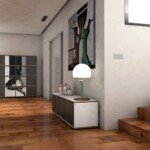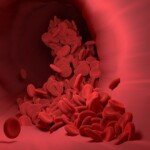Accuracy is at its core: Your basic guide to your CNC turning parts
Ever wondered how complex metal components (from tiny medical device parts to powerful aerospace accessories) were mass-produced with production accuracy? The answer is usually in CNC turn. This cornerstone of modern manufacturing converts raw materials into precise functional parts with unparalleled efficiency and repeatability. If your project requires cylindrical or rotational symmetry, CNC steering may be your preferred process.
Uncovering the mystery of the process: How CNC rotation works
Unlike milling (involving rotating tools and fixed workpiece movement) CNC rotation Rotate the workpiece at high speed, while the precisely controlled cutting tool moves in linear and radial paths to remove material. Imagine a complex lathe: the raw materials (rebar stock, forged, cast) are securely clamped onto the rotating spindle. Computer Numerical Control (CNC) determines the exact movement of the cutting tool – The turret holding multiple tools automatically switches to perform different operations in sequence.
- Key participants: The workpiece rotates, and the cutting tool advances along a predefined path (mainly the X and Z axes), while the CNC controller executes the programming instructions (G-CODE). The coolant rinses the debris and dissipates heat.
- Core operations: Rotate (create an outer diameter), face (create a flat surface at the end), boredom (enlarge or complete an internal hole), drilling (forming a hole along the axis), thread (inside or outside), grooves, rolling, rolling and splitting (cutting off the finished parts in stock).
- Experience accuracy: Modern CNC lathes, especially complex multi-axis machines, achieve tolerances in +/- 0.0002 inches (0.005 mm) or higher, with a smooth enough finish that requires minimal after-treatment.
Types of CNC turn operation: the required matching process
CNC rotation is not entire. Different configurations handle different complexities:
- 2-axis turn: Main force. The workpiece rotates (C axis), and the tool moves linearly (X and Z). Ideal for producing direct rotating parts such as shafts, bushings, simple bolts, shims and pins, and efficiently efficiently.
- 3-axis turn: Added real-time tooling capabilities. When the part rotates, the driven tools (such as the micro milling spindle on the turret) can perform eccentric operations – radial drilling, milling flat shoes, cutting slots – all can be set at once. This greatly reduces processing and increases complexity.
- Multi-axis rotation (5 axes at the same time): system Swiss lathe or Multitasking Computer (MTM) Combined with other rotation axes (Y axis, B axis). This allows a single fixture to process highly complex parts, often asymmetrical, and features multiple sides. Considering complex hydraulic components, implantable medical devices and complex aerospace accessories, the setup changes are impractical.
Materials are important: What can CNC turn?
CNC rotation is very versatile in materials:
- Metal: Aluminum (easy to process, lightweight), steel (stainless steel, alloy, carbon-strength variation), brass/bronze (corrosion resistance, aesthetics), titanium (high strength to weight, aviation/avalent/avalent), copper (copper (conductivity), power conductivity), Exotics (Inconel, Hastelloy, Hastelloy – Hastelloy – Hastelloy – Hastelloy – Hastelloy – Hastelloy – Hastelloy – Hastelloy – Hastelloy – Hastelloy – Hastelloy – Hastelloy – Hastelloy – Hastelloy – Hastelloy – Hastelloy – Hastelloy – Hastelloy – Hastelloy – Hastelloy – Hastelloy – Hastelloy – High heat/heat resistance/resistance).
- plastic: Nylon, acetyl (Delrin), PEEK (medical/chemistry), PTFE (Teflon-chemical inert), acrylic acid (PMMA), UHMW (wear resistance), ABS. Special tools and parameters are required to avoid melting or fragmentation.
- wood: Rotate intricate spindles, decorative pieces (usually CNC wood beds).
- Selection criteria: Key considerations include required part functionality (strength, weight, conductivity), environment (corrosion, temperature), cosmetic requirements, processability and cost.
Why choose CNC rotation? Undeniable advantages
- Uncompromising accuracy and accuracy: CNC automation ensures that every part is the same and is critical for components and high-performance applications.
- Excellent repeatability: Once programmed, thousands of identical parts can be produced with minimal differences.
- Scalability and efficiency: Ideal for mass production. Modern machines are equipped with steel feeders that can operate continuously, minimizing labor costs.
- Upper surface surface: Achieving finishes from functional to near friction through optimized tools and parameters often reduces or eliminates secondary finishes.
- Material efficiency: Near mesh starting materials and precise tool paths minimize waste, especially compared to the subtraction process of milling cylinders from blocks.
- Complexity processing: Real-time tools and multi-axis rotation unlock complex parts generation in a single setup, increasing efficiency and geometric possibilities.
Design for Success: CNC Turnaround Considerations
To maximize productivity and cost-effectiveness:
- Prioritize simple: Initially, complex internal features or extreme aspect ratios may be more suitable for milling. Design is mainly used for rotational symmetry.
- Sharp corners inside: Avoid them. The cutting tool requires a radius; a sharp 90-degree angle inside is impossible. Specify an acceptable inner corner radius (usually >= tool tip radius).
- Wall thickness: Ensure sufficient stiffness during processing. Thin walls can deflect or vibrate, destroying accuracy and finish.
- Feature Depth: Drilling/boring deep holes require specialized tools and slower cycles; avoid unnecessary extreme depth. There is a standard debris depth.
- Chamfers & Radii: Design chamfers on edges or radius to eliminate sharp corners, reduce machining (reduce tool stress) and partial processing.
- tolerance: Don’t over-specify! More severe tolerances greatly increase costs and cycle times. Functional tolerances are specified only if absolutely necessary.
- Material selection: Consider processability. Free alloys with sufficient quantity demanded; avoid excessive hardness or abrasive materials unless necessary.
Where will you find CNC rotating parts (all over!)
The universality of turning components is astonishing:
- car: Engine components (pistons, valves, shafts), transmission parts, suspension bushings, fasteners, sensors.
- aerospace: Landing gear gear assembly, hydraulic accessories, fuel system parts, engine mounts, actuator parts.
- Medical: Implant (bone screws, joint components), surgical instrument shaft/drill, inhaler assembly, diagnostic equipment housing.
- Industrial Machinery: Bearings, shafts, gears, rollers, couplings, valves, pump housing/impe.
- Fluid power: Hydraulic/cylinder, piston, valve body, accessories, adapters.
- electronic: Connector pins, housings, radiator, waveguides, sensor components.
- consumer goods: Equipment motors and components, pipe accessories, knobs, handles, sports equipment parts.
Why is Greatlight five-axis CNC machining your ideal partner?
Turning to a project requires expertise, advanced technology and commitment to quality – that’s Great Good at it. We are not only another machinery workshop. We are experts Five-axis CNC machiningbring unparalleled functionality to your turn projects and other projects.
- Cutting-edge five-axis technology: Our state-of-the-art multi-axis CNC machines go beyond standard turntables. Our synchronous five-axis feature provides the solution when your project requires complex geometry, complex features on multiple part faces, or the final accuracy of challenging materials such as titanium or exotic alloys. This allows the complete manufacturing of complex parts in a single setup, greatly reducing lead times, eliminating error stacks from multiple setups, and implementing geometry on a simple machine.
- Deep material expertise: We are not just machine materials; we master them. From standard aluminum and stainless steel to challenging appearances like Inconel, Peek or Titanium, our engineers know the exact technology, speed, feed and tools needed to achieve the best results.
- Standard accuracy: Quality is deeply rooted in our process. We utilize strict inspection protocols (including CMM) to ensure that each turn part meets or exceeds the tolerances you specify, always batch after batch.
- A true one-stop solution: Greatlight provides comprehensive post-processing and sorting services. From burrs and polishing to anodizing, plating, painting, heat treatment and more, we handle all the completion requirements under one roof, simplifying logistics and accelerating your path to the finished product.
- Agility and value: Is there an emergency prototype or a large production? We’re good at Quick custom processing spanning a wide range of materials. Combined with our commitment to providing solutions Best Pricewe offer excellent value without compromise. Tailored solutions ensure you get exactly what your project needs.
Facing challenging metal parts manufacturing problems, with complex geometry or harsh materials? Greglight five-axis CNC machining is the first choice for intelligence. Utilize our expertise, technology and commitment to excellence. Customize your precision turning parts (and more) to be efficient and efficient – start quoting now!
in conclusion
In the world of precision manufacturing, CNC steering remains an essential process. It produces high precision, perfectly round or contoured parts with excellent repeatability and efficiency, making them essentially basic in countless industries. From the simplicity of large-capacity sales with 2-axis operation to the complex dance of five-axis machines for making complex medical equipment, CNC Turning offers solutions for a variety of needs. Understand the benefits of the process, material options and key design considerations to enable you to take advantage of this technology effectively. Facing demanding requirements – complex geometry, challenging materials or the need for ultimate precision and simplified production – work with experts from Greatlight, its advanced five-axis capabilities and comprehensive service delivery to ensure your project can deliver its full potential on time and on time.
Frequently Asked Questions about CNC Rotating Parts (FAQs)
-
What are the main differences between CNC turning and CNC milling?
- change: The workpiece rotates and the tool moves linearly. Mainly used to create rotational symmetry (cylinders, cones, discs).
- Milling: The cutting tool rotates, the workpiece remains stationary (mainly) or moves linearly. Mainly used to create complex 3D contours, pockets, slots and prism-shaped workpieces.
-
Can CNC rotation produce non-circular parts?
- First, the CNC rotation is used to rotate the component. However, with Real-time tools (3 axes) or Multi-axis machining (5-axis)you able Combined with features such as center flats, slots, holes, and even milling profiles on the main rotating parts During turn operation In a setting.
-
What tolerances can CNC steering achieve?
- Standard tolerances are typically about +/- 0.005 inches (0.127 mm). High-precision CNC turn can be achieved +/- 0.0002 inches (0.005 mm) or betterdepending on part size, material, machine stiffness and operator skills. Always discuss tolerance requirements with your machine shop, as tighter tolerances can greatly affect costs.
-
Which one is better for prototypes, CNC turns or 3D printing?
- CNC rotation: Best for functional prototypes that require metal or specific engineering plastic properties, dimensional accuracy and strength, especially in the event of final partial rotation. For simple metal prototypes, it is usually faster and more cost-effective.
- 3D printing: For highly complex geometries that cannot be processed, very small capacity (1-2) prototypes, or when using unique materials (such as special resins), better. CNC prototypes usually have high-quality mechanical properties for functional testing. The choice depends on part of the geometry, material requirements and functional testing requirements.
-
Why choose a store with five-axis CNC turn feature?
- Five-axis machines (like Greatlight’s machines) offer important advantages:
- Single setup complexity: The machine’s highly complex parts have multiple sides function without re-covering.
- Improve accuracy: Eliminates error accumulation in multiple settings.
- Access difficulty angle: Allows tools to approach parts from the optimal angle for improved surface effect and tool life.
- Faster ahead: Combining OPS into one setup will greatly reduce the overall machining time.
- Unlock complexity: Create geometric shapes on the center of 3 axes or simpler turn.
- Five-axis machines (like Greatlight’s machines) offer important advantages:
-
What file formats are usually required for CNC turn stores?
- 2D draft: Basic! PDF or DWG/DXF files have clear views, all dimensions, geometric tolerances (GD&T), critical functions, finish requirements and material specifications.
- 3D Model: Step (.STP) or IGES (.igs) files are universal preferences for complex parts because they contain precise geometric data required for CAM programming. Some stores can also accept formats such as SolidWorks (.sldPrt) or Parasites (.x_T).
- How to reduce the cost of CNC turning parts?
- Simplified design: Reduce unnecessary complexity, internal functions, strict tolerances.
- Increase the number: Utilizing Economy of Scale – Cost per part usually decreases with larger operation.
- Select standard materials: Select highly processable materials that are readily available when possible.
- Consider tolerances: Apply tight tolerances only where functionality is critical.
- Manufacturing Design (DFM): In the early stages of the design phase, consult your CNC partner (just like Greatlime). Their expertise can propose cost-saving optimizations without compromising functionality. Logistics costs can also be saved by leveraging its internal post-processing.


















